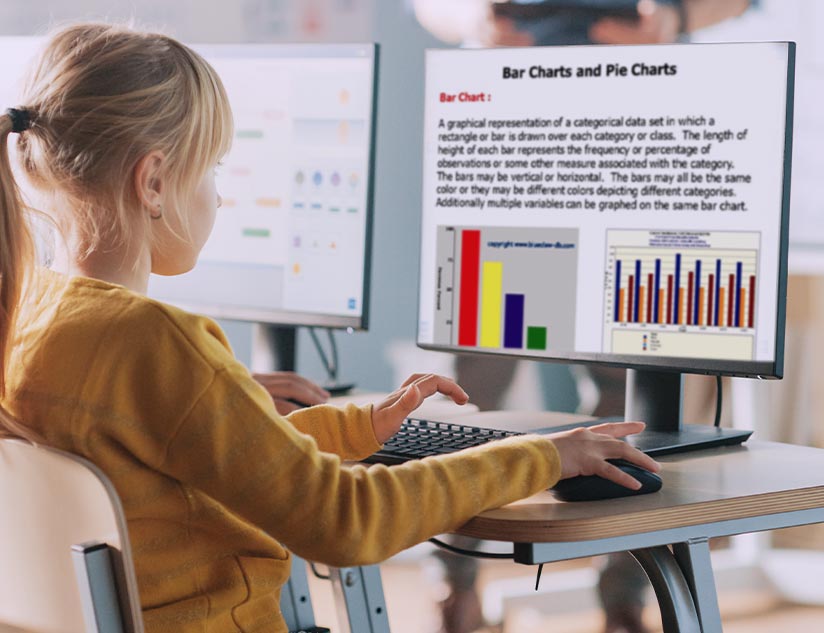One thing that leaders in the field of education and educational publishing agree upon is that technology is here to stay, disrupting the way we live and work. Rapid advances in technology have completely changed several job profiles, while creating new ones. In fact, research published by the World Economic Forum states that 65% of the students entering primary education today are likely to find employment in occupations that don’t exist at present.
The report goes on to say that 90% organizations are currently facing an IT skills shortage, while 75% students and educators believe that there is a skills gap in them being able to meet the IT skills demand. To prepare students to fit into the workforce in the future, K-12 education needs to implement certain changes today. More importantly, to prepare students for a digital economy, K-12 education needs to adopt digital learning.
“The “digital revolution” we have witnessed in most sectors hasn’t been fully embraced in education yet – but it inevitably will. The tools and technologies available today will empower education, allowing for on-demand learning. The most significant benefits of this revolution will come in the form of a personalised education that is delivered in a bespoke manner,” says Tom Dolfi, Head of Marketing at Pathfinder.
How Digital Learning Can Help
Thoughtful technology integration in the classroom can help students actively engage with concepts and ideas, enhancing the learning experience. This fact has been reaffirmed by a landmark K-12 survey of almost 17,000 teachers and administrators, The State of Digital Learning, published in February 2020. The survey data shows that both teachers and administrators believe that digital learning has a positive impact, not just on students, but also the teachers.
In other words, digital learning enhances student growth and academic achievement, while also positively impacting faculty effectiveness and growth. It helps save time for teachers, while allowing them to track student progress and provide individualized support. Here’s a look at the key ways in which digital learning, delivered through a robust learning experience platform, can help prepare students with the career skills of the future.
1. Personalized Education
Deeper understanding is key to being able to apply classroom learning in the real world. To make this happen, it is important to tailor education to the needs of each student, perhaps the most significant advantage of digital learning. With learning material being available on multiple devices, including smartphones, tablets and computers, students have the flexibility to access course materials anytime and from anywhere. They can learn in their preferred style and time. In fact, with the integration of an offline eReader, students don’t even need to wait for internet connectivity to access learning. In addition, they can choose to watch videos of the subject, if text alone doesn’t help understand a concept. They can use audio clips and multimedia elements to grasp each topic, leading to deeper learning.
2. Collaborative Learning & Teamwork
Collaborative learning is the preferred learning style of students of today. They like to share information and experiences with their peers online. With a digital learning platform that integrates various options for collaboration, students can connect with others through message boards, discussion groups and other online forums. Teachers can join in the discussion too, helping students grasp difficult concepts in a collaborative manner. In addition, group assignments can be provided, where students work as a team to complete a project. This helps each student discover their strengths and passion. When technology teaches students to collaborate, it inculcates the crucial skill of teamwork, which will prove beneficial in professional life.
3. Develop Critical Thinking
Critical thinking is a crucial skill for career advancement. Employers look for candidates who are able to think autonomously and solve problems, rather than wait to be instructed in every little task. To succeed in the workplace, students need the ability to think through a situation on their own and come up with various solutions. From these, they need to be able to pick the most effective solution and apply it to complete the task. With an online learning platform, students have various tools and vast amounts of information at their fingertips, which they can use for problem solving. In short, they not only receive syllabus-based education, but also strengthen professional skills.
4. Delivering CTE & STEM
Career and Technical Education (CTE) and STEM learning are not just buzzwords. These are the forms of education that will prepare the workforce of tomorrow. With digital learning, students take a more active part in their learning journey, as compared to traditional classroom lectures. This enables them to gain a deeper understanding of concepts. In addition, difficult concepts can be delivered through explainer videos, step-by-step tutorials, infographics and even simulations of real-life situation through gamification. With all these facilities, students don’t even realize how easily they learn new concepts, while being totally engaged in the process. Through such forms of digital teaching, students are encouraged to ask more questions, seek facts for themselves, explore new ideas and topics and much more. Not only does this foster career learning, it inculcates the habit of lifelong learning, which will be a key strength to stay relevant in the future.
“The future of education is hands-on. Learning has always benefited from hands-on play. Every day, technologies come forth that make hands-on learning not only more fun, but a lot more educational,” says Vikas Gupta, co-founder and CEO of Wonder Workshop.
5. Teaches Adaptability & Fosters Student-Led Learning
The pace at which technology is advancing today is unprecedented. The current generation of students, Gen Z, are digital natives and are usually familiar with the latest technologies. They are comfortable with using technology for most of their needs at home. Doing so at school is only an extension of an already established habit. However, with digital learning, what students gain is much greater exposure to technology and hands-on experience, including the latest computer skills. This helps students remain open to new technologies and quickly adapt when things change.
A crucial aspect of this type of learning is student-led learning. Educators agree that students should be given greater autonomy to choose what they learn and how they learn. This is especially important, given the need for K-12 education to focus on helping students transition from school to the outside world, says a report by Google for Education, Future of the Classroom: Emerging Trends in K-12 Education. The report goes on to list key statistics:
- 76% of teachers in Mexico believe that autonomous learning is one of the greatest advantages of using technology in the classroom.
- 65% of American educators state that student-led learning is “extremely valuable” in developing “21st century skills.”
- 67% of the general public in Spain say that it is more important for public schools to teach students to be creative and think independently than to encourage discipline.
“Schools finally beginning to realize that you can’t force passion and motivation upon students. We know that it is not your IQ, but your passion and motivation, that are the keys to success. So, if we can start with the student’s interests, we can build skills and knowledge from there. Then, learning comes in overdrive and students are set up well to become lifelong learners,” says Rob Houben, Head of School, Agora.
There is no denying that education today needs to prepare students for the future, such that they have the skills necessary for a successful career. The use of technology to deliver K-12 education is the best way to achieve this goal. For that, what schools and educational publishers need is a feature-rich, user-friendly digital learning platform. Contact us to learn more.















